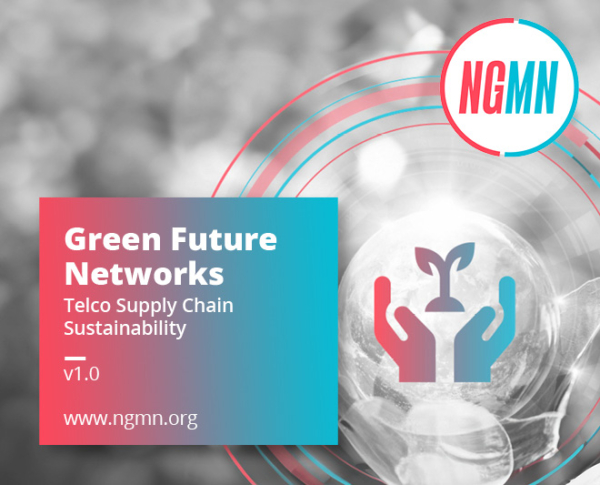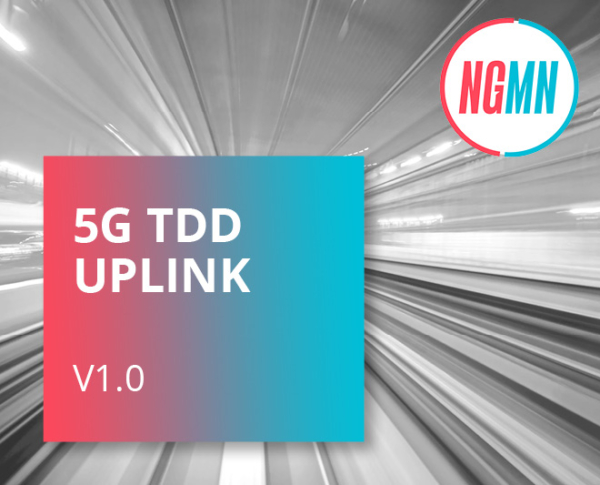Frankfurt, Germany, August 24, 2022:
NGMN Alliance will hold its highly recognized global Industry Conference & Exhibition (IC&E) taking place every two years, on September 7-9, 2022, at the Pavillon d’Armenonville in Paris. C-Level and other top management participants will share their perspectives on today’s and tomorrow’s opportunities and challenges and the future of mobile telecommunications.
The event features an eminent and outstanding line-up of speakers while offering unique networking opportunities with world’s top leaders from major operators, network vendors and academia. The IC&E agenda focuses on NGMN’s three strategic focus topics, Mastering the Route to Disaggregation, Green Future Networks and 6G – with a particular focus on Green Future Networks.
Arash Ashouriha, SVP Group Technology Innovation, Deutsche Telekom and Chairman of the NGMN Alliance Board, explains: “Our conference is known to be ‘the platform’ where key industry leaders and decision makers meet and exchange with eco-system partners. This year’s agenda, confirmed speakers and exhibitors speak for themselves, our audience can expect a valuable and exciting event.”
Laurent Leboucher, Group CTO & Senior Vice President at Orange Innovation Networks and NGMN Alliance Board Member, concludes: “Bringing the IC&E to Paris is an honour and with Orange being a major sponsor and exhibitor, I look forward to the event and many relevant discussions with industry peers.”
“We are happy and proud to present to our audience this notable speaker and exhibitor line-up at our signature event. Globally recognized top speakers from around the globe representing operators, vendors, system integrators and research institutions provide their insights and visions for the most pertinent subjects of our industry”, adds Anita Döhler, CEO of NGMN Alliance.
The IC&E 2022 starts on September 7 with a Grand Opening evening event including the opening of the exhibition. On September 8, the conference focuses on the two topics of “Mastering the Route to Disaggregation” and “The Road to 6G”. On September 9 the focus is with “Green Future Networks” including green tech innovation.
Individual presentations paired with panel discussions moderated by renown industry experts Camille Mendler, Gabriel Brown, Guy Daniels and Stéphane Téral address vital themes of the telecommunications industry: How is the mobile industry mastering the route to disaggregation, with an analyst’s view and lessons learned from greenfield and brownfield operators, as well as relevant insights provided by vendors and system integrators. How to ensure 6G meets market and industry requirements? What are likely to be the key technology enablers offered by 6G? What do we learn from 5G and how will 5G evolve to 6G? How is the mobile industry managing sustainability challenges? And how is this achieved whilst deploying 5G and moving to 6G?
Alongside the conference, an exhibition showcases leading international industry and research partners. This year Autonom, Crossflow Energy, Eurecom, Fraunhofer, Huawei, InterDigital, Keysight, Kynetic Energy, Mowea, Nokia, Orange, and Rosenberger demonstrate state of the art concepts and solutions. This years’ IC&E sponsors include: Alium, Avanci, Bell, Deloitte, Ericsson, Hewlett Packard Enterprise, Huawei, IBM, Juniper Networks, ng-voice, Orange, Qualcomm, Rohde & Schwarz, Sisvel, Spinner, TELUS and umlaut.
TelecomTV is the exclusive broadcasting partner of the NGMN Industry Conference & Exhibition 2022.
For further information, please visit: ice2022.ngmn.org
____
Further information
Sep 7 – Grand Opening Night including the Opening of the Exhibition
Michaël Trabbia, Chief Technology and Innovation Officer at Orange, will hold the keynote speech on the Grand Opening Night on September 7.
Day 1, Sep 8 – “Mastering the Route to Disaggregation”, “Cloudification” and “Road to 6G”.
NGMN Alliance CEO Anita Döhler will welcome all participants, followed by keynote speeches from Arash Ashouriha (Deutsche Telekom) and Laurent Leboucher (Orange). Ibrahim Gedeon (TELUS), Howard Watson (BT), Marisa Viveros (IBM), Vivek Gupta (Google Cloud) and Andrea Calvi (TIM) will discuss what the key success factors are to enable the route to cloud native implementations as well as its impact on network automation. After Stéphane Téral shared the analyst’s view, key operators in greenfield and brownfield situations as well as vendors will discuss how to address the opportunities and challenges of disaggregated networks and what is required to achieve successful launches and operations – featuring Joachim Groß (1&1), Haider Syed (Rakuten Symphony), David Bachmann (ng-voice), Petr Ledl (Deutsche Telekom), Carlos Fernandes (Deutsche Telekom) and Arvin Siena (PLDT & Smart Communications). In the afternoon, Aurelio Nocerino (Accenture), Pavan Kurapati (Juniper Networks) and Anne Stephan (Rohde & Schwarz) individually present their views and insights on how the mobile industry is Mastering the Route to Disaggregation and what is required to enable innovation, speed and agility in developing, deploying and operating new services. Verena Weber (OECD), Takehiro Nakamura (NTT DOCOMO), David Lister (Vodafone), Javan Erfanian (Bell Canada), Yuhong Huang (China Mobile), Takki Yu (SK Telecom), Peter Merz (Nokia), Wen Tong (Huawei), Christian Bauer (Trumpf) and Frank Fitzek (TU Dresden) share their views on what the 6G’s drivers are and how 6G can contribute to the needs of our globe by 2030.
Day 1 of the IC&E also accommodates the IPR Business Lunch on 5G Patent Pools. Laurie Fitzgerald (Avanci), Bill Geary (Alium), Thomas Rößler (Sisvel) and the NGMN IPR Chair Serge Raes (Orange) share their expert views, hosted by NGMN Legal Counsel Stefan Engel-Flechsig.
Camille Mendler, Chief Analyst at Omdia, Gabriel Brown, Principal Analyst at Heavy Reading, and Stéphane Téral, Chief Analyst at LightCounting Market Research, moderate the conference and the panels on the 8th of September.
Day 2, Sep 9 – “Green Future Networks” and “Green Tech Innovation”
After a welcome by NGMN Alliance CEO Anita Döhler, Steve Martineau (Senior Advisor to COP26) will hold a keynote speech. Saima Ansari (Deutsche Telekom), Hakan Ekmen (umlaut), Graziano Catucci (HPE), Philipp Deibert (Deloitte) and Jeroen Cox (KPN) will kick off the first session, highlighting topics such as roadmaps to carbon neutrality and implementation examples by MNOs and Vendors, best practice: deployments of energy efficiency standards, E2E service footprint measurement, requirements to metering, green networks KPIs and methodologies – the route to an industry standard and the eco-design of products. This will be followed by a special session, in which four innovative green start-ups present their solutions for the telecommunications industry featuring Sandra Stickel (Kynetic Energy), Robert Johnen (Mowea), Hugues Marceau (Autonom) and Nick Primavesi (Crossflow Energy). Jane Rygaard (Nokia), Ana Maria Galindo (Orange), Yogesh Malik (Tele2), Mats Pellbäck Scharp (Ericsson) and Philip Song (Huawei) will share their views on how the mobile industry manages its own sustainability challenges and how this is achieved whilst deploying 5G and moving towards 6G.
Guy Daniels, Director of Content at TelecomTV, moderates the panels and guides through day 2 of the conference.









